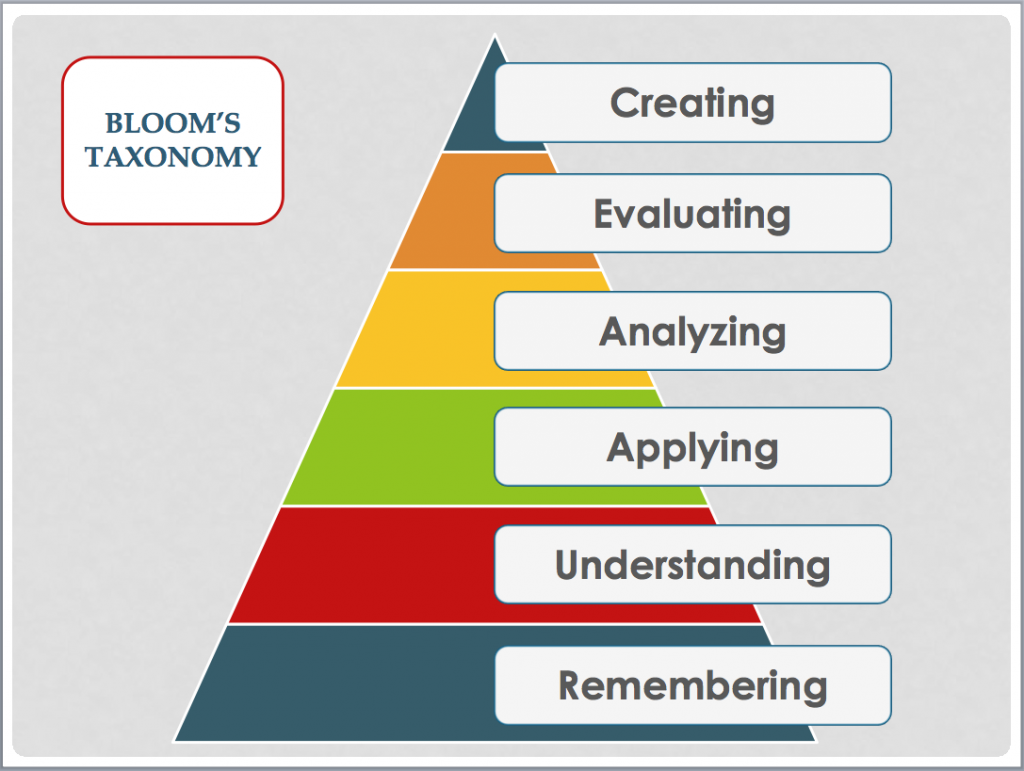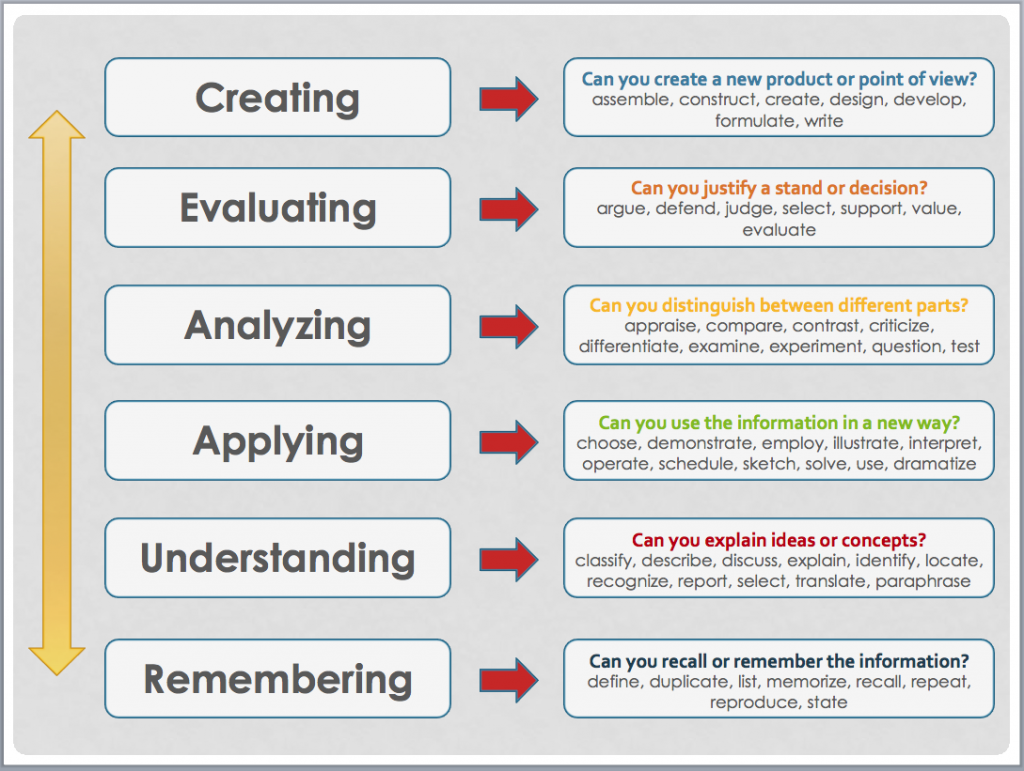Blooming as a learner
Bloom’s taxonomy is a very well known classification of learning objectives. Every time you read a learning objective on a lesson, most likely it was created based on Bloom’s taxonomy. The basic premise of this classification is that in order to achieve higher learning you need to pass through the multiple levels of the cognitive domain. The taxonomy is traditionally represented as a pyramid that you navigate from bottom to top.

According to Huit (2001):
“Beginning in 1948, a group of educators undertook the task of classifying education goals and objectives. The intent was to develop a classification system for three domains: the cognitive, the affective, and the psychomotor. The major idea of the taxonomy is that learning objectives can be arranged in a hierarchy from less to more complex.”
“Memorizing facts is not enough to get a good grade in college”. “You need to develop higher level thinking skills to succeed in most of your courses”. If you’ve heard these statements before, blame Bloom’s taxonomy. There’s a big chance you’ve heard about this concept before, or maybe not. But what does it mean for you as a learner? How does it affect your learning experience? Isn’t this something only teachers and professors should know about?
While your college professors are responsible for establishing objectives and teaching, you are still responsible for your own learning. And the more you know about how learning occurs the higher your chances of succeeding.
What you really should know is that learning happens in a continuum of levels. Some types of learning requires “lower level thinking” (memorizing concepts and definitions) while others require you to develop “higher levels of thinking” (judging, critiquing, inventing, applying, etc.). But you don’t need to think about the taxonomy always as a hierarchical pyramid. The truth is that the “lower level” learning can happen while you are engaged in “higher level” activities or thought processes.

When trying to achieve better learning, is important to develop a set of questions that will help you think through the multiple levels of Bloom’s taxonomy. Here is a graphic with some ideas on how to develop those questions and that deeper thinking.

References:
Huitt, W. (2011). Bloom et al.’s taxonomy of the cognitive domain. Educational Psychology Interactive. Valdosta, GA: Valdosta State University. Retrieved from http://www.edpsycinteractive.org/topics/cognition/bloom.html [pdf]
Overbaugh, R and Schultz L. Bloom’s Taxonomy. Old Dominion University. Retrieved from http://ww2.odu.edu/educ/roverbau/Bloom/blooms_taxonomy.htm



